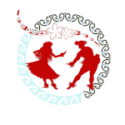In Tahitian dance (‘Ori Tahiti), Te’i refers to a specific movement that is an important part of the dance vocabulary. It is commonly used in various styles of dance, particularly in the traditional fast-paced dance form called ‘Ōte’a. The movement involves a sharp, quick action, often characterized by its powerful and rhythmic nature.
Understanding Te’i in Tahitian Dance
- Translation and Meaning:
- Te’i can be translated as “to strike” or “to hit.” In the context of Tahitian dance, this refers to a precise and sharp movement, typically performed with the hips, but it can also involve other parts of the body. The movement often “hits” or accentuates a beat in the music.
Technique of Te’i
- Movement Characteristics:
- The main characteristic of Te’i is its sharpness. The dancer quickly strikes or “hits” a particular part of their body, usually the hips, but it can also involve the arms or torso. The movement is synchronized with the rhythm of the music, making it an essential part of the performance’s overall energy and timing.
- Types of Movements:
- Hip Strike: In its most basic form, Te’i is performed by quickly thrusting the hips in a sharp, defined motion. The dancer may twist or thrust their hips forward, backward, or side-to-side, depending on the variation.
- Arm and Torso Variations: While the focus is typically on the hips, Te’i can also involve striking motions from the arms or torso. These variations help emphasize particular moments in the music and can add more complexity and flair to the performance.
- Accentuating the Rhythm: The sharpness of Te’i is meant to accentuate the beats in the music, particularly the drum rhythms. The dancer “hits” the movement in time with the beat, making it an essential tool for showcasing the precision and energy of the music.
Role in Tahitian Dance
- Rhythmic Emphasis:
- Te’i is used to accentuate specific beats in the music, particularly in the fast-paced drumming rhythms of ‘Ōte’a. The sharp movements help emphasize the rhythm, drawing attention to the dynamic flow of the dance.
- Energy and Intensity:
- The quick, sharp nature of Te’i adds a burst of energy to the performance. It is often used in rapid sequences, contributing to the fast-paced and high-energy feel of the dance, especially in ‘Ōte’a.
- Core Strength and Control:
- Executing Te’i requires significant core strength and control. Dancers must engage their abdominal muscles and maintain stability as they execute these sharp, forceful movements, particularly when using the hips or torso.
- Visual Impact:
- The precision and sharpness of Te’i movements create a striking visual effect, drawing the audience’s attention to the dancer’s skill in executing the movement. The quick, forceful motions help to emphasize the dancer’s timing and ability to keep pace with the rhythm of the music.
Training and Mastery
- Core Engagement and Balance:
- Mastering Te’i requires strong abdominal and hip control. Dancers need to engage their core muscles to execute the sharp, forceful movements, while maintaining balance and stability in the rest of the body.
- Hip Flexibility and Precision:
- Hip flexibility is crucial for performing Te’i smoothly. The dancer must have the ability to move their hips in quick, precise motions without losing control. This requires practice and muscle memory to ensure the movements are sharp and accurate.
- Timing and Synchronization:
- Te’i is heavily dependent on rhythmic timing. Dancers must be able to synchronize their sharp movements with the drumming and music, ensuring that each “hit” aligns perfectly with the beat.
Symbolism and Connection
- Expression of Power:
- Te’i is often a symbol of power and vitality. The sharp, striking movements express energy and force, reflecting the dynamic and powerful elements of Polynesian culture.
- Connection to Nature:
- As with many Tahitian dance movements, Te’i reflects a deep connection to nature. The sharpness of the movement may be linked to natural forces, such as the crashing of waves, gusts of wind, or the striking of lightning. The dancer embodies these natural elements through their precise, forceful movements.
Examples of Usage in Dance Styles
- In ‘Ōte’a (Fast-Paced Dance):
- In ‘Ōte’a, Te’i is often used to punctuate the rhythm of the music. The dancer performs a sharp movement, typically with the hips or arms, to accentuate specific beats in the drumming. The movement is often rapid and synchronized with other dancers, creating a sense of unity and precision in the performance.
- In ‘Aparima (Storytelling Dance):
- While ‘Aparima tends to be slower and more fluid, Te’i may still be used sparingly to emphasize particular moments or to create more intensity in certain sections of the dance. It can help highlight key emotions or themes in the storytelling aspect of the dance.
Examples of Usage
- In Group Performances:
- In group performances, Te’i is often performed in unison, with all dancers executing the sharp movements together. This creates a dramatic visual effect, as the synchronized motions add a layer of intensity and energy to the performance.
- In Solo Performances:
- In solo performances, Te’i allows the dancer to showcase their control, precision, and ability to stay in sync with the rhythm. The sharp movements are often used to highlight moments of intensity or drama, drawing the audience’s attention to the dancer’s connection with the music.
Symbolism and Cultural Relevance
- Embodying Natural Forces:
- The sharp, striking movements of Te’i may represent powerful natural elements like storms, winds, or the force of nature. The dancer’s ability to execute the movement with power reflects a connection to these elements, emphasizing the dynamic energy inherent in the natural world.
- Cultural Expression of Vitality:
- In Tahitian culture, movements like Te’i convey strength, vitality, and the ability to harness energy through the body. The forceful nature of the movement expresses these qualities, which are important in Polynesian traditions that emphasize vitality and connection to the land and environment.
